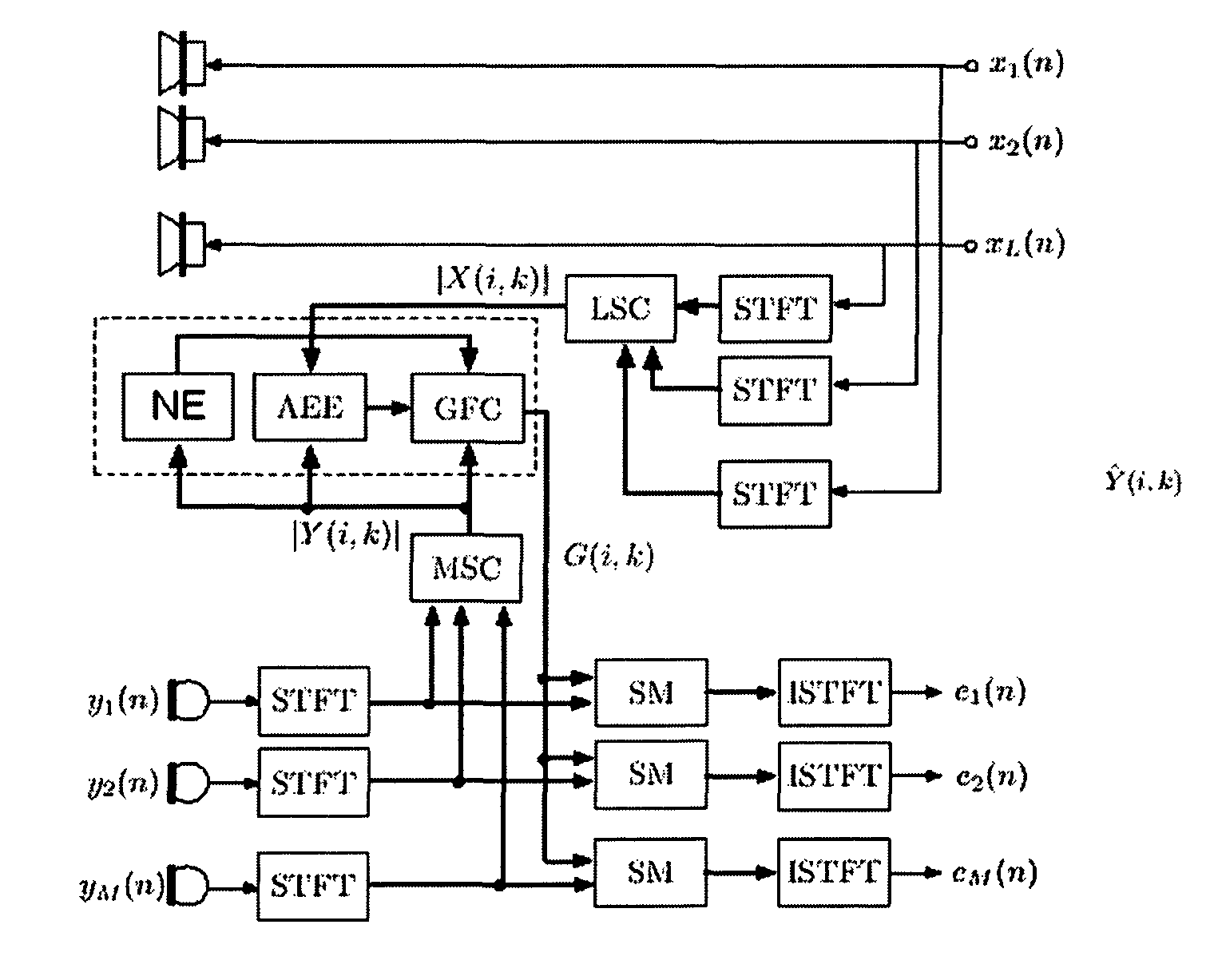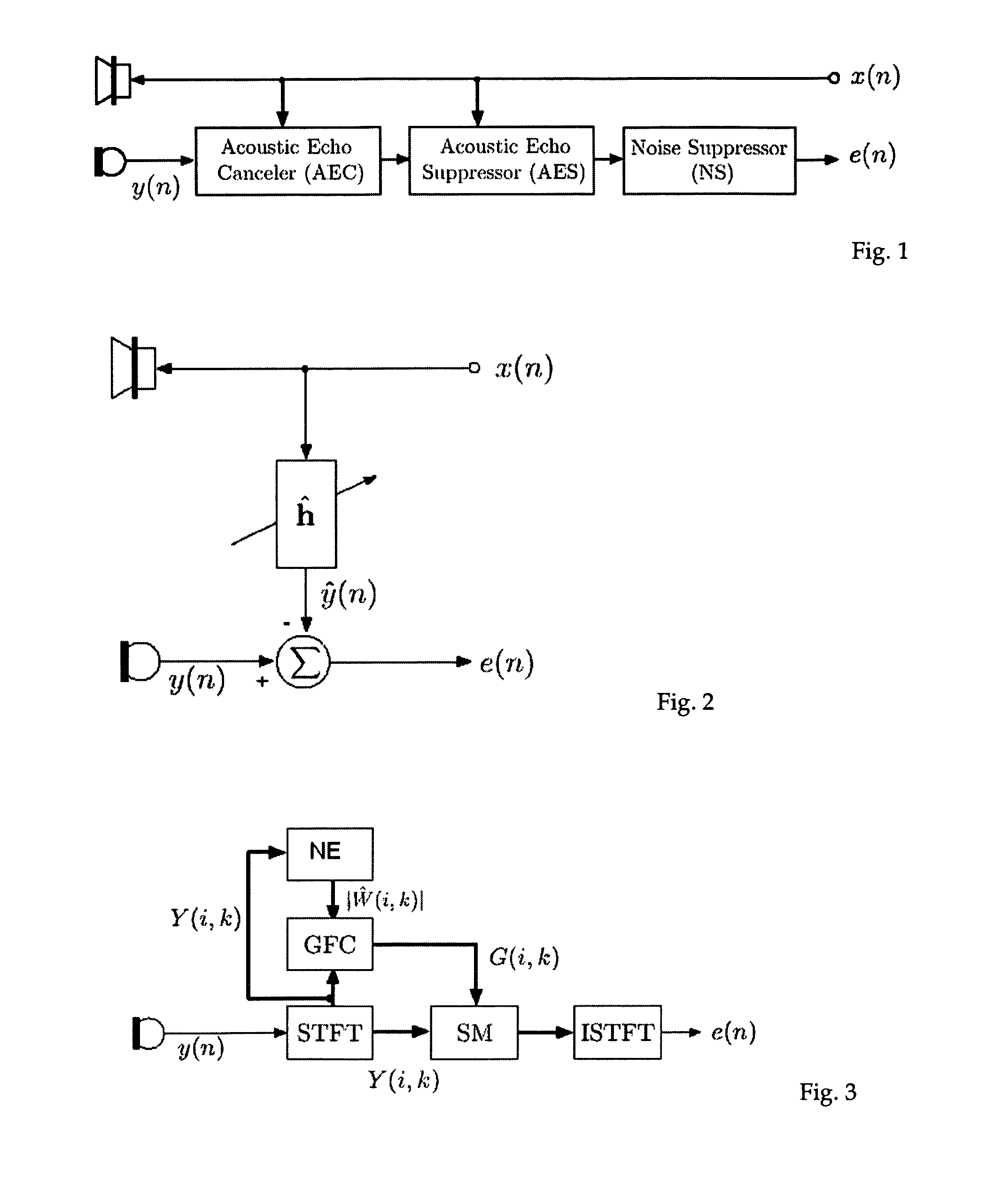Hybrid echo and noise suppression method and device in a multi-channel audio signal
a multi-channel audio signal and hybrid echo technology, applied in the direction of substation equipment, two-way loud-speaking telephone systems, interconnection arrangements, etc., can solve the problems of insufficient removal of echo, insufficient estimation of the spectral envelope of the echo signal, and insufficient adjustment of the adaptive filter predicting the spectral envelop
- Summary
- Abstract
- Description
- Claims
- Application Information
AI Technical Summary
Benefits of technology
Problems solved by technology
Method used
Image
Examples
Embodiment Construction
[0029]FIG. 1 illustrates a handsfree speech communication client system with an AEC, AES, and NS. The microphone signal is first processed in the Acoustic Echo Canceller (AEC), then passed to the Acoustic Echo Suppressor (AES) and finally transmitted to a Noise Suppressor (NS). It is to be noted that both AEC and AES need information from the loudspeaker signal.
[0030]FIG. 2 shows a general view of an adaptive echo canceller. The echo estimate ĥ estimated from the loudspeaker signal x(n) is subtracted from the microphone signal y(n) to produce echo free microphone signal e(n).
Noise Suppressor (NS)
[0031]FIG. 3 illustrates a noise suppressor (NS) based on spectral modification. Note that bold lines in the figures denote a plurality of spectral coefficients or subbands. This is a block diagram of a noise suppression algorithm by modifying the spectral magnitude, where STFT, NE, GFC, SM, and ISTFT stand for short-time Fourier transform (STFT), noise estimation (NE), gain filter computati...
PUM
 Login to View More
Login to View More Abstract
Description
Claims
Application Information
 Login to View More
Login to View More - R&D
- Intellectual Property
- Life Sciences
- Materials
- Tech Scout
- Unparalleled Data Quality
- Higher Quality Content
- 60% Fewer Hallucinations
Browse by: Latest US Patents, China's latest patents, Technical Efficacy Thesaurus, Application Domain, Technology Topic, Popular Technical Reports.
© 2025 PatSnap. All rights reserved.Legal|Privacy policy|Modern Slavery Act Transparency Statement|Sitemap|About US| Contact US: help@patsnap.com



